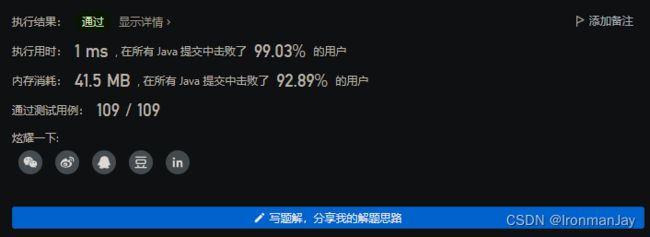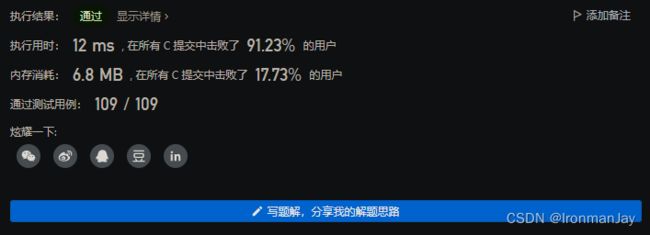今天实在想不出做什么了,翻了翻小游戏,看到了原创的颜色一次性于是,就想到何不做这个呢???废话不多说,上代码!!!!!#include#includeusingnamespacestd;intmain(){cout>yanse;if(yanse==1){cout<<"跳转中......"<
智能形状匹配技术全解析:从经典算法到深度学习与神经形态计算【超级详细版】
AI筑梦师
计算机视觉算法深度学习人工智能机器学习计算机视觉python
智能形状匹配技术全解析:从经典算法到深度学习与神经形态计算1.引言1.1研究背景在计算机视觉、模式识别、医学影像分析和自动驾驶等领域,形状匹配是核心任务之一。然而,现实世界的形状往往存在可变性(Variability),主要体现在以下几个方面:形变(Deformation):物体可能由于柔性材料、外力作用或生物运动发生非刚性形变。尺度变化(ScaleVariation):目标形状在不同场景下可能大
成为编程大佬!!----->数据结构与算法(2)——顺序表!!
Elnaij
算法数据结构c语言
前言:线性表是数据结构与算法的重中之重,所有具有线性逻辑结构的数据结构,都能称为线性表。这篇文章我们先来讨论线性表中的顺序表,顺序表和线性表都是后续实现栈,树,串和图等等结构的重要基础。目录❀简单介绍线性表❀顺序表❀顺序表的存储❀动态存储❀静态存储❀静态存储与动态存储的优缺点❀顺序表操作❀1.初始化顺序表❀2.销毁顺序表❀3.插入数据❀插入数据之判断已满否❀插入操作之尾插❀插入操作之头插❀插入数据
字符串模式匹配——Brute-Force暴力查找算法以及KMP算法具象图解,超级详细!!
Elnaij
算法数据结构c语言
目录前言1.串的模式匹配算法目的1.1Brute-Force算法图解Brute-force算法Brute-force暴力查找算法的弊端1.2KMP算法next数组1.2.1Getnext——求next数组的函数图解Getnext函数Getnext函数总结1.2.2KMP模式匹配操作KMP匹配过程图解KMP算法总结结束语:前言这两个算法,尤其是KMP算法,可以说是让许多算法小白头痛的了。如果你也十分
HarmonyOS开发,A持有B,B引用A的场景会不会导致内存泄漏,代码示例告诉你答案
MardaWang
HarmonyOSNEXTOpenHarmonyharmonyos华为
问题:A持有B,B引用A的场景会不会导致内存泄漏?答案:方舟虚拟机的内存管理和GC采用的是根可达算法,根可达算法可以解决循环引用问题,不会导致A引用B,B引用A的内存泄漏。根可达算法原理根可达算法以一系列被称为“根对象”(如栈中的局部变量、静态变量等)作为起始点,从这些根对象开始向下搜索,能够被搜索到的对象被认为是可达对象,而那些无法被搜索到的对象则被判定为不可达对象,会在垃圾回收时被清理。所以,
【etcd】
茉菇
etcd数据库
一、ETCD简介etcd是一个由CoreOS团队开发的开源项目,旨在提供一个高可用的、分布式的、一致的键值存储,用于配置共享和服务发现。尽管它看起来像一个键值存储,但etcd的设计目标远远超出了传统数据库的功能范围。etcd的核心特性包括:高可用性和容错性:etcd使用Raft共识算法来确保数据的一致性和服务的高可用性。这意味着即使集群中的某些节点出现故障,etcd也能继续提供服务,并保证数据的一
Python 模拟鼠标轨迹算法
a485240
鼠标轨迹计算机外设
一.鼠标轨迹模拟简介传统的鼠标轨迹模拟依赖于简单的数学模型,如直线或曲线路径。然而,这种方法难以捕捉到人类操作的复杂性和多样性。AI大模型的出现,使得能够通过深度学习技术,学习并模拟更自然的鼠标移动行为。二.鼠标轨迹算法实现AI大模型通过学习大量的人类鼠标操作数据,能够识别和模拟出自然且具有个体差异的鼠标轨迹。以下是实现这一技术的关键步骤:数据收集:收集不同玩家在各种游戏环境中的鼠标操作数据,包括
【打卡d5】快速排序 归并排序
吧啦吧啦吡叭卜
排序算法算法java
快速排序算法模板——模板题AcWing785.快速排序voidquick_sort(intq[],intl,intr){if(l>=r)return;inti=l-1,j=r+1,x=q[(l+r)/2];while(ix);if(i=r)return;intmid=(l+r)>>1;merge_sort(q,l,mid);merge_sort(q,mid+1,r);intk=0,i=l,j=mi
python 游戏开发cocos2d库安装与使用
范哥来了
pythoncocos2d开发语言
Cocos2d-x是一个广泛使用的开源游戏开发框架,支持多种编程语言,包括Python。对于Python开发者来说,通常使用的是Cocos2d-py或者更现代的Cocos2d-x的Python绑定版本。这里我将指导你如何安装和开始使用Cocos2d-py。安装步骤安装Python:确保你的系统上已经安装了Python3.x版本。你可以从Python官方网站下载最新版的Python。安装pip:pi
代练代打护航系统小程序源码:游戏生态的“双刃剑”
vue.jsmysql
近年来,随着游戏产业的蓬勃发展,代练代打行业也逐渐兴起。代练代打护航系统小程序的出现,为这一行业提供了一个新的平台,也引发了关于其利弊的讨论。本文将深入分析代练代打护航系统小程序源码,探讨其对游戏生态的影响。源码获取地址!!!!请点击!!!代练代打护航系统小程序通常包含以下功能模块:用户模块:用户注册、登录、个人信息管理、实名认证等。订单模块:玩家发布订单、代练接单、订单管理、交易担保等。评价模块
什么是机器视觉3D引导大模型
视觉人机器视觉
机器视觉3D3d数码相机机器人人工智能大数据
机器视觉3D引导大模型是结合深度学习、多模态数据融合与三维感知技术的智能化解决方案,旨在提升工业自动化、医疗、物流等领域的操作精度与效率。以下从技术架构、行业应用、挑战与未来趋势等方面综合分析:一、技术架构与核心原理多模态数据融合与深度学习3D视觉引导大模型通常整合RGB图像、点云数据、深度信息等多模态输入,通过深度学习算法(如卷积神经网络、Transformer)进行特征提取与融合。例如,油田机
探索AI知识库的无限潜力:定义、应用与未来展望
知识库知识库管理知识库软件
一、AI知识库的定义AI知识库,作为人工智能技术与传统知识库概念的融合,是指利用人工智能算法和技术构建、管理和维护的信息存储系统。它不仅包含了大量的结构化、半结构化和非结构化数据,还具备智能检索、推理分析、自我学习和优化等高级功能。AI知识库通过模拟人类的认知过程,实现了对知识的有效组织和高效利用,为各种应用场景提供了强大的支持。二、AI知识库的应用1.客户服务与支持在电子商务领域,AI知识库的应
【Go基础】Go入门与实践资源帖
小超人冲鸭
golang开发语言后端
看到好的持续更新……Go系统教程从语法讲起:李文周博客七天快速上手项目Go测试驱动开发博客孔令飞项目开发实战课程,孔令飞图文教程《Go语言高级编程》书籍Go算法刷题模板Go实战项目KV系统crawlab分布式爬虫平台seaweedfs分布式文件系统Cloudreve云盘系统gfast后台管理系统(基于GoFrame)alist多存储文件列表(基于Gin、React)Yearning开源SQL审核平
【Hinton论文精读】The Forward-Forward Algorithm: Some Preliminary Investigations-202212
tyhj_sf
论文研读笔记ML理论系列人工智能深度学习FF算法
博文导航0引言1论文摘要2反向传播有什么问题呢?3Forward-Forward算法3.1使用逐层优化函数学习多层表示4Forward-Forward算法的实验4.1反向传播baseline4.2FF算法的一个简单的无监督的例子4.3FF算法的一个简单的监督例子4.4使用FF算法来模拟感知中自上而下的效应4.5作为教师使用空间环境的预测4.6CIFAR-10实验5睡眠6FF算法与其他对比性学习技术
基于粒子滤波与卡尔曼滤波的锂离子电池放电时间预测与使用特征研究
算法如诗
电池建模(RULBC)粒子滤波锂离子电池放电时间预测
基于粒子滤波与卡尔曼滤波的锂离子电池放电时间预测与使用特征研究一、研究背景与意义锂离子电池作为现代储能系统的核心组件,其放电时间(End-of-DischargeTime,EOD)的准确预测对电池管理系统(BMS)的可靠性和安全性至关重要。传统方法(如安时积分法)易受噪声、温度漂移等因素干扰,而基于状态估计的滤波算法(粒子滤波/PF、卡尔曼滤波/KF)通过动态更新模型参数,能显著提升预测精度。二、
选择排序算法解析与代码实例展示
程序员总部
java排序算法算法java
选择排序是一种简单、直观的排序算法,适合用来处理小规模的数据。它的基本思想是每次从待排序的元素中选择最小的元素,然后将其放到已排序序列的末尾。听起来挺简单吧?接下来,让我们详细了解一下选择排序的工作原理、代码实现和一些性能特点。选择排序的步骤可以分为几个关键部分:初始状态:假设我们有一个数组,里面存放了一系列的数字。比如说,数组是[64,25,12,22,11]。在排序之前,这些数字是无序的。选择
Ai斗地主智能出牌算法
zzzzzzzzzzzw___
——灌水算法人工智能斗地主
去年有想写个斗地主的小游戏,自己玩玩。找了很多资料,后来好不容易在网上找到了一个AI算法。转过的的时候是贴在自己电脑的TXT文本上,再次感谢下原作者。现在借花献佛发给你参考下。我以前写过一个斗地主机器人。思路如下,希望对你有帮助。斗地主AI设计一、牌型1火箭:大小王在一起的牌型,即双王牌,此牌型最大,什么牌型都可以打。2炸弹:相同点数的四张牌在一起的牌型,比如四条A。除火箭外,它可以打任何牌型,炸
基于android平台的斗地主AI
清源Eamonmon
cocos2d-x学习笔记
本软件是基于android平台的斗地主AI,我们在源代码的基础之上,旨在改进AI的算法,使玩家具有更丰富的体验感,让NPC可以更为智能。(一)玩法解析:(1)发牌和叫牌:一副扑克54张,先为每个人发17张,剩下的3张作为底牌,玩家视自己手中的牌来确定自己是否叫牌。按顺序叫牌,谁出的分多谁就是地主,一般分数有1分,2分,3分。地主的底牌需要给其他玩家看过后才能拿到手中,最后地主20张牌,农民分别17
深度学习在医学影像分析中的应用:DeepSeek系统的实践与探索
Evaporator Core
#深度学习#DeepSeek快速入门DeepSeek进阶开发与应用深度学习人工智能
随着人工智能技术的迅猛发展,深度学习在医学领域的应用逐渐成为研究热点。医学影像分析作为医疗诊断的重要组成部分,正受益于深度学习技术的突破。DeepSeek系统是一种基于深度学习的医学影像分析平台,旨在通过高效、精准的算法辅助医生进行疾病诊断和治疗决策。本文将深入探讨DeepSeek系统的技术原理、实现方法及其在医学影像分析中的实际应用,并结合代码示例展示其核心功能。1.DeepSeek系统的技术架
STOPWATCH类
抗争到底zhy
前端
在C#中,Stopwatch类属于System.Diagnostics命名空间,它的主要用途是精准测量代码块的执行时间。在性能分析、算法优化以及其他需要时间测量的场景里,这个类非常实用。下面为你详细介绍Stopwatch类。基本使用步骤1.引入命名空间usingSystem.Diagnostics;2.创建Stopwatch实例Stopwatchstopwatch=newStopwatch();3
LeetCode 2610. 转换二维数组
迪小莫学AI
每日算法leetcode算法数据结构
LeetCode2610.转换二维数组题目描述给定一个整数数组nums,请你创建一个满足以下条件的二维数组:二维数组应该只包含数组nums中的元素。二维数组中的每一行都包含不同的整数。二维数组的行数应尽可能少。返回结果数组。如果存在多种答案,则返回其中任何一种。注意:二维数组的每一行上可以存在不同数量的元素。示例示例1:输入:nums=[1,3,4,1,2,3,1]输出:[[1,3,4,2],[1
华为OD机试题库清单以及考点说明,2025.3.16切换2025A卷(Python/JS/C/C++)
哪 吒
搬砖工逆袭Java架构师华为odpythonjavascript2025A卷华为OD机试
专栏导读本专栏收录于《华为OD机试真题(Python/JS/C/C++)》。刷的越多,抽中的概率越大,私信哪吒,备注华为OD,加入华为OD刷题交流群,每一题都有详细的答题思路、详细的代码注释、3个测试用例、为什么这道题采用XX算法、XX算法的适用场景,发现新题目,随时更新。2024年8月14日,华为官方已经将华为OD机试(D卷)切换为E卷。目前正在考的是E卷,按照华为OD往常的操作,E卷题目是由往
Git 分支使用规范全解(附项目示例)
滴答滴答滴嗒滴
开发Ai入门指南gitelasticsearch大数据个人开发
Git分支使用规范全解(附项目示例)本文结合实际项目开发,详细讲解如何在多人协作中使用Git分支,包括main、develop、feature/*、bugfix/*、release/*、hotfix/*等分支类型。场景背景:开发一个“智能垃圾分类系统”目标是开发一套运行于边缘设备上的垃圾识别系统,使用AI算法模型识别投放物,并分类投放,同时配有后台管理页面。分支说明与实际应用示例main分支(生产
华为OD机试 - 日志采集系统(Python/JS/C/C++ 2024 E卷 100分)
哪 吒
华为odpythonjavascript
华为OD机试2024E卷题库疯狂收录中,刷题点这里专栏导读本专栏收录于《华为OD机试真题(Python/JS/C/C++)》。刷的越多,抽中的概率越大,私信哪吒,备注华为OD,加入华为OD刷题交流群,每一题都有详细的答题思路、详细的代码注释、3个测试用例、为什么这道题采用XX算法、XX算法的适用场景,发现新题目,随时更新。一、题目描述日志采集是运维系统的的核心组件。日志是按行生成,每行记做一条,由
【优化选址】基于多目标遗传NSGAII、多目标免疫遗传算法求解考虑成本、救援时间和可靠性的海上救援选址多目标优化问题研究(Matlab代码实现)
荔枝科研社
matlab数据结构算法
欢迎来到本博客❤️❤️博主优势:博客内容尽量做到思维缜密,逻辑清晰,为了方便读者。⛳️座右铭:行百里者,半于九十。本文目录如下:目录⛳️赠与读者1概述基于多目标遗传NSGAII、多目标免疫遗传算法求解考虑成本、救援时间和可靠性的海上救援选址多目标优化问题研究一、引言二、海上救援选址多目标优化问题分析(一)成本因素(二)救援时间因素(三)可靠性因素三、多目标遗传NSGAII算法(一)算法原理(二)在
算法-动态规划-最大子数组和
程序员南飞
算法动态规划leetcodejava开发语言数据结构职场和发展
力扣题目:53.最大子数组和53.描述:给你一个整数数组nums,请你找出一个具有最大和的连续子数组(子数组最少包含一个元素),返回其最大和。子数组是数组中的一个连续部分。示例1:输入:nums=[-2,1,-3,4,-1,2,1,-5,4]输出:6解释:连续子数组 [4,-1,2,1]的和最大,为 6。示例2:输入:nums=[1]输出:1示例3:输入:nums=[5,4,-1,7,8]输出:2
统一思想认识
永夜-极光
思想
1.统一思想认识的基础,才能有的放矢
原因:
总有一种描述事物的方式最贴近本质,最容易让人理解.
如何让教育更轻松,在于找到最适合学生的方式.
难点在于,如何模拟对方的思维基础选择合适的方式. &
Joda Time使用笔记
bylijinnan
javajoda time
Joda Time的介绍可以参考这篇文章:
http://www.ibm.com/developerworks/cn/java/j-jodatime.html
工作中也常常用到Joda Time,为了避免每次使用都查API,记录一下常用的用法:
/**
* DateTime变化(增减)
*/
@Tes
FileUtils API
eksliang
FileUtilsFileUtils API
转载请出自出处:http://eksliang.iteye.com/blog/2217374 一、概述
这是一个Java操作文件的常用库,是Apache对java的IO包的封装,这里面有两个非常核心的类FilenameUtils跟FileUtils,其中FilenameUtils是对文件名操作的封装;FileUtils是文件封装,开发中对文件的操作,几乎都可以在这个框架里面找到。 非常的好用。
各种新兴技术
不懂事的小屁孩
技术
1:gradle Gradle 是以 Groovy 语言为基础,面向Java应用为主。基于DSL(领域特定语言)语法的自动化构建工具。
现在构建系统常用到maven工具,现在有更容易上手的gradle,
搭建java环境:
http://www.ibm.com/developerworks/cn/opensource/os-cn-gradle/
搭建android环境:
http://m
tomcat6的https双向认证
酷的飞上天空
tomcat6
1.生成服务器端证书
keytool -genkey -keyalg RSA -dname "cn=localhost,ou=sango,o=none,l=china,st=beijing,c=cn" -alias server -keypass password -keystore server.jks -storepass password -validity 36
托管虚拟桌面市场势不可挡
蓝儿唯美
用户还需要冗余的数据中心,dinCloud的高级副总裁兼首席营销官Ali Din指出。该公司转售一个MSP可以让用户登录并管理和提供服务的用于DaaS的云自动化控制台,提供服务或者MSP也可以自己来控制。
在某些情况下,MSP会在dinCloud的云服务上进行服务分层,如监控和补丁管理。
MSP的利润空间将根据其参与的程度而有所不同,Din说。
“我们有一些合作伙伴负责将我们推荐给客户作为个
spring学习——xml文件的配置
a-john
spring
在Spring的学习中,对于其xml文件的配置是必不可少的。在Spring的多种装配Bean的方式中,采用XML配置也是最常见的。以下是一个简单的XML配置文件:
<?xml version="1.0" encoding="UTF-8"?>
<beans xmlns="http://www.springframework.or
HDU 4342 History repeat itself 模拟
aijuans
模拟
来源:http://acm.hdu.edu.cn/showproblem.php?pid=4342
题意:首先让求第几个非平方数,然后求从1到该数之间的每个sqrt(i)的下取整的和。
思路:一个简单的模拟题目,但是由于数据范围大,需要用__int64。我们可以首先把平方数筛选出来,假如让求第n个非平方数的话,看n前面有多少个平方数,假设有x个,则第n个非平方数就是n+x。注意两种特殊情况,即
java中最常用jar包的用途
asia007
java
java中最常用jar包的用途
jar包用途axis.jarSOAP引擎包commons-discovery-0.2.jar用来发现、查找和实现可插入式接口,提供一些一般类实例化、单件的生命周期管理的常用方法.jaxrpc.jarAxis运行所需要的组件包saaj.jar创建到端点的点到点连接的方法、创建并处理SOAP消息和附件的方法,以及接收和处理SOAP错误的方法. w
ajax获取Struts框架中的json编码异常和Struts中的主控制器异常的解决办法
百合不是茶
jsjson编码返回异常
一:ajax获取自定义Struts框架中的json编码 出现以下 问题:
1,强制flush输出 json编码打印在首页
2, 不强制flush js会解析json 打印出来的是错误的jsp页面 却没有跳转到错误页面
3, ajax中的dataType的json 改为text 会
JUnit使用的设计模式
bijian1013
java设计模式JUnit
JUnit源代码涉及使用了大量设计模式
1、模板方法模式(Template Method)
定义一个操作中的算法骨架,而将一些步骤延伸到子类中去,使得子类可以不改变一个算法的结构,即可重新定义该算法的某些特定步骤。这里需要复用的是算法的结构,也就是步骤,而步骤的实现可以在子类中完成。
Linux常用命令(摘录)
sunjing
crondchkconfig
chkconfig --list 查看linux所有服务
chkconfig --add servicename 添加linux服务
netstat -apn | grep 8080 查看端口占用
env 查看所有环境变量
echo $JAVA_HOME 查看JAVA_HOME环境变量
安装编译器
yum install -y gcc
【Hadoop一】Hadoop伪集群环境搭建
bit1129
hadoop
结合网上多份文档,不断反复的修正hadoop启动和运行过程中出现的问题,终于把Hadoop2.5.2伪分布式安装起来,跑通了wordcount例子。Hadoop的安装复杂性的体现之一是,Hadoop的安装文档非常多,但是能一个文档走下来的少之又少,尤其是Hadoop不同版本的配置差异非常的大。Hadoop2.5.2于前两天发布,但是它的配置跟2.5.0,2.5.1没有分别。 &nb
Anychart图表系列五之事件监听
白糖_
chart
创建图表事件监听非常简单:首先是通过addEventListener('监听类型',js监听方法)添加事件监听,然后在js监听方法中定义具体监听逻辑。
以钻取操作为例,当用户点击图表某一个point的时候弹出point的name和value,代码如下:
<script>
//创建AnyChart
var chart = new AnyChart();
//添加钻取操作&quo
Web前端相关段子
braveCS
web前端
Web标准:结构、样式和行为分离
使用语义化标签
0)标签的语义:使用有良好语义的标签,能够很好地实现自我解释,方便搜索引擎理解网页结构,抓取重要内容。去样式后也会根据浏览器的默认样式很好的组织网页内容,具有很好的可读性,从而实现对特殊终端的兼容。
1)div和span是没有语义的:只是分别用作块级元素和行内元素的区域分隔符。当页面内标签无法满足设计需求时,才会适当添加div
编程之美-24点游戏
bylijinnan
编程之美
import java.util.ArrayList;
import java.util.Arrays;
import java.util.HashSet;
import java.util.List;
import java.util.Random;
import java.util.Set;
public class PointGame {
/**编程之美
主页面子页面传值总结
chengxuyuancsdn
总结
1、showModalDialog
returnValue是javascript中html的window对象的属性,目的是返回窗口值,当用window.showModalDialog函数打开一个IE的模式窗口时,用于返回窗口的值
主界面
var sonValue=window.showModalDialog("son.jsp");
子界面
window.retu
[网络与经济]互联网+的含义
comsci
互联网+
互联网+后面是一个人的名字 = 网络控制系统
互联网+你的名字 = 网络个人数据库
每日提示:如果人觉得不舒服,千万不要外出到处走动,就呆在床上,玩玩手游,更不能够去开车,现在交通状况不
oracle 创建视图 with check option
daizj
视图vieworalce
我们来看下面的例子:
create or replace view testview
as
select empno,ename from emp where ename like ‘M%’
with check option;
这里我们创建了一个视图,并使用了with check option来限制了视图。 然后我们来看一下视图包含的结果:
select * from testv
ToastPlugin插件在cordova3.3下使用
dibov
Cordova
自己开发的Todos应用,想实现“
再按一次返回键退出程序 ”的功能,采用网上的ToastPlugins插件,发现代码或文章基本都是老版本,运行问题比较多。折腾了好久才弄好。下面吧基于cordova3.3下的ToastPlugins相关代码共享。
ToastPlugin.java
package&nbs
C语言22个系统函数
dcj3sjt126com
cfunction
C语言系统函数一、数学函数下列函数存放在math.h头文件中Double floor(double num) 求出不大于num的最大数。Double fmod(x, y) 求整数x/y的余数。Double frexp(num, exp); double num; int *exp; 将num分为数字部分(尾数)x和 以2位的指数部分n,即num=x*2n,指数n存放在exp指向的变量中,返回x。D
开发一个类的流程
dcj3sjt126com
开发
本人近日根据自己的开发经验总结了一个类的开发流程。这个流程适用于单独开发的构件,并不适用于对一个项目中的系统对象开发。开发出的类可以存入私人类库,供以后复用。
以下是开发流程:
1. 明确类的功能,抽象出类的大概结构
2. 初步设想类的接口
3. 类名设计(驼峰式命名)
4. 属性设置(权限设置)
判断某些变量是否有必要作为成员属
java 并发
shuizhaosi888
java 并发
能够写出高伸缩性的并发是一门艺术
在JAVA SE5中新增了3个包
java.util.concurrent
java.util.concurrent.atomic
java.util.concurrent.locks
在java的内存模型中,类的实例字段、静态字段和构成数组的对象元素都会被多个线程所共享,局部变量与方法参数都是线程私有的,不会被共享。
Spring Security(11)——匿名认证
234390216
Spring SecurityROLE_ANNOYMOUS匿名
匿名认证
目录
1.1 配置
1.2 AuthenticationTrustResolver
对于匿名访问的用户,Spring Security支持为其建立一个匿名的AnonymousAuthenticat
NODEJS项目实践0.2[ express,ajax通信...]
逐行分析JS源代码
Ajaxnodejsexpress
一、前言
通过上节学习,我们已经 ubuntu系统搭建了一个可以访问的nodejs系统,并做了nginx转发。本节原要做web端服务 及 mongodb的存取,但写着写着,web端就
在Struts2 的Action中怎样获取表单提交上来的多个checkbox的值
lhbthanks
javahtmlstrutscheckbox
第一种方法:获取结果String类型
在 Action 中获得的是一个 String 型数据,每一个被选中的 checkbox 的 value 被拼接在一起,每个值之间以逗号隔开(,)。
所以在 Action 中定义一个跟 checkbox 的 name 同名的属性来接收这些被选中的 checkbox 的 value 即可。
以下是实现的代码:
前台 HTML 代码:
003.Kafka基本概念
nweiren
hadoopkafka
Kafka基本概念:Topic、Partition、Message、Producer、Broker、Consumer。 Topic: 消息源(Message)的分类。 Partition: Topic物理上的分组,一
Linux环境下安装JDK
roadrunners
jdklinux
1、准备工作
创建JDK的安装目录:
mkdir -p /usr/java/
下载JDK,找到适合自己系统的JDK版本进行下载:
http://www.oracle.com/technetwork/java/javase/downloads/index.html
把JDK安装包下载到/usr/java/目录,然后进行解压:
tar -zxvf jre-7
Linux忘记root密码的解决思路
tomcat_oracle
linux
1:使用同版本的linux启动系统,chroot到忘记密码的根分区passwd改密码 2:grub启动菜单中加入init=/bin/bash进入系统,不过这时挂载的是只读分区。根据系统的分区情况进一步判断. 3: grub启动菜单中加入 single以单用户进入系统. 4:用以上方法mount到根分区把/etc/passwd中的root密码去除 例如: ro
跨浏览器 HTML5 postMessage 方法以及 message 事件模拟实现
xueyou
jsonpjquery框架UIhtml5
postMessage 是 HTML5 新方法,它可以实现跨域窗口之间通讯。到目前为止,只有 IE8+, Firefox 3, Opera 9, Chrome 3和 Safari 4 支持,而本篇文章主要讲述 postMessage 方法与 message 事件跨浏览器实现。postMessage 方法 JSONP 技术不一样,前者是前端擅长跨域文档数据即时通讯,后者擅长针对跨域服务端数据通讯,p

